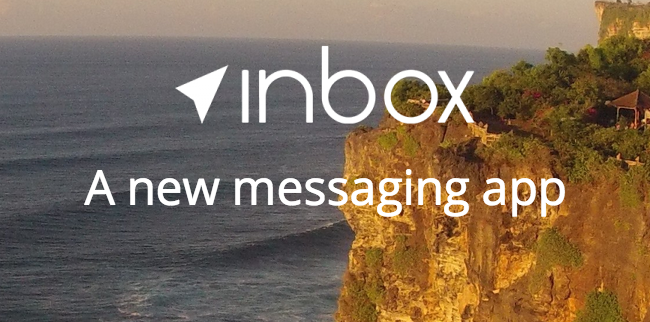Inbox Is A Pretty Messaging App, But It's Not All That Useful

We cover a lot of startups and apps here, and for companies that put out apps with a social focus, a lack of users is almost always a kiss of death. As it should be — what good is an app to the user if they don’t have anyone to use it with? Such is the case with Inbox, an app that aims to be a sort of Snapchat for messaging. Though there are some features that other apps should sit up and take notice of, the utility of the app is minimal because you likely won’t find any of your friends on it.
First off, Inbox is a really good looking app, if not a bit over the top. It absorbs the look and feel of the surrounding iOS 7, using a lot of empty space, solid colors and skinny fonts. There is a home screen in the app that you can reach by tapping the “Home” option, and here you can switch back and forth between your inbox, contact list, settings screen and share menu. The “zoom out” effect applied by the home screen is neat. The downside to such a screen is that it places a lot of extra taps between you and what you’re trying to do.
In many other messaging apps, a contact list is one tap or one swipe away. Those extra taps add up over time and add a feeling of clumsiness to what is otherwise a snappy application.
There are some features in Inbox that I’d love to see implemented in other places. When I said that Inbox was the Snapchat of messaging, I wasn’t kidding. Privacy is a big focus. If someone you send a message to takes a screen shot, not only are you informed, but Inbox also sends you a copy of the screenshot. If you want to erase an exchange between yourself and another user, you can delete it on your iPhone and it’ll vanish from the other user’s phone as well as Inbox’s servers.
But perhaps this “privacy” works too well. In my tests with Jeff, I found that conversations I had started on my iPad did not sync over to my iPhone and vice versa. Maybe this is how the app is intended to work, or maybe it’s an error I was experiencing. But it falls out of line with the way most messaging apps work, and a user who expects Inbox to retain those consistencies will be disappointed when he or she finds an empty inbox on a new device.
Another Snapchat-ish feature is the photo editing possible when sharing images with another user. With that capability, it almost feels like Snapchat is embedded inside the Inbox messaging app, save for the “hold to view” functionality and the self-destructing timers we’re used to.
Inbox is the kind of app I could see becoming popular with the right tweaks and the right break. It’s an interesting take on messaging and it’s a really pretty app. Unfortunately, its usefulness takes a big hit because you might have a hard time finding friends in the app. It’s the classic social network catch-22, where I can’t really recommend Inbox because of its small user base, yet more users is exactly what would make it a compelling download.
Should the app become more popular, I’ll revise with an updated recommendation. In the meantime, you can try Inbox out for yourself by downloading it from the App Store.